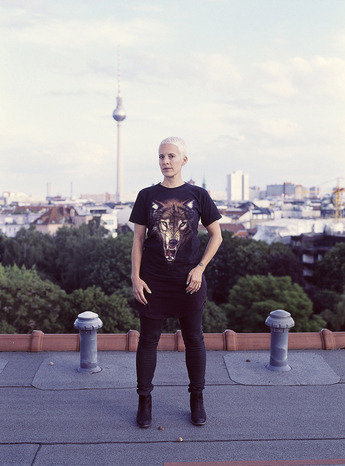
R
E
V N
E
X
T
Days before the National Gallery of Victoria’s NGV Triennial kicked off in Melbourne, Candice Breitz, one of the participating artists, staged a protest by “sabotaging” her own work.
The artwork in question, Love Story (2016), is a seven-channel video installation that was produced based on interviews with six subjects who have fled their homelands due to oppressive or dangerous conditions, and was co-commissioned by the NGV, Outset Germany, Berlin, and Medienboard Berlin-Brandenburg. The work falls under one of the five themes within the NGV Triennial, “Movement,” which addresses the ongoing refugee crisis in various parts of the world. Ahead of the NGV Triennial’s opening, Breitz renamed the installation Wilson Must Go.
Breitz’s protest is rooted in the NGV’s new contract with Wilson Security, which provided services at Australia’s offshore detention facilities on the Manus and Nauru Islands, where many asylum seekers are confined. On December 12, three days before the NGV Triennial became open to the public, the artist wrote on Facebook that the “new title will remain in effect as long as the work is on view at the National Gallery of Victoria, or when the work is exhibited in any other exhibition context on Australian soil, until the NGV severs its relationship with Wilson Security.”
Wilson Security is a company with over 9,000 employees who render security services in Australia and New Zealand. Though Wilson claims to “offer the highest level of protection and peace of mind” for their clients, a 2015 report by the Australian Senate uncovered 30 allegations of child abuse and 15 cases of sexual assault or rape at detention facilities contracted to Wilson Security.
Later, documents that were leaked in August 2016 and dubbed the “Nauru files” described cases where the company’s employees inflicted violence upon detainees, including a guard who grabbed a boy by his throat and banged his head against the ground, and alleged that additional incidents of sexual violence and child abuse were not disclosed to parliament during review processes. Less than a month later, Wilson Security announced that it would withdraw from the Australian government’s offshore detention centers at the end of its contract in October 2017.
In an open letter penned by the Artists’ Committee, a group of Melbourne-based art world figures address NGV director Tony Ellwood by saying, “There is no doubt about it: Wilson Security profits from human misery,” urging the institution to terminate its contract with the company. The letter was delivered to the NGV on August 11. Citing that the “NGV remains silent about using Wilson Security,” the Artists’ Committee then organized a blockade of the triennial’s entrance on December 14, at the event’s VIP preview. Explanatory handouts were given to guests, stating: “We want to assure you that our protest is not directed at you [patrons], the artists, or individual security staff members, but at Wilson Security, the NGV governance and, by consequence, the state government.” Museum employees were instructed to guide the VIPs to enter through a side entrance, while some visitors attempted to physically push through the protestors.
The decision to hire Wilson Security at the NGV was not made by museum personnel, but by a state panel.
Other artists have joined Breitz’s action. Richard Mosse, a photographer from Ireland and 2017 Prix Pictet winner, adjusted his artwork in the NGV Triennial. His 16-channel video installation was altered to include a statement by Behrouz Boochani, a Kurdish refugee and filmmaker who is currently detained on Manus Island: “Art is beauty, and artists have a responsibility to show the beauty of human beings and the beauty of the world, to make life bearable and show the connections between us all.”
Another artist in the Triennial, Mexican-Canadian electronic artist Rafael Lozano-Hemmer, renamed his artwork Recorded Assembly as Wilson Must Go / The Sequel.
The NGV Triennial opens today, on December 15, with works by over 100 artists and designers from 32 countries. It will run until April 15, 2018.
Brady Ng is the reviews editor of ArtAsiaPacific.
To read more articles by ArtAsiaPacific, visit our Digital Library.



